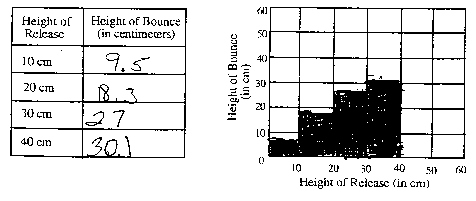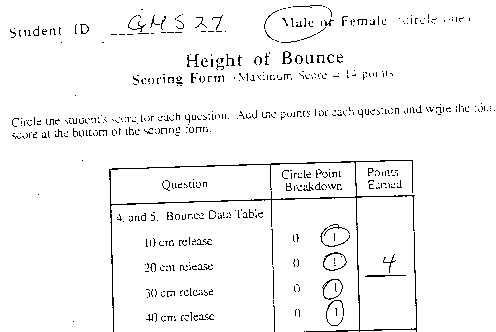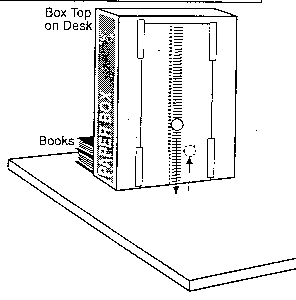 |
 |
|
|
|
|
8th Grade Performance Task Student #1 |
| For practice, release the ball from any point on the scale and determine the height to which it bounces. The "height of bounce" is the distance from the table top to the bottom of the ball on the first bounce. (Practice a few times to make an accurate observation. |
3. Your task: Hold the ball near the scale on the box so that the bottom of the ball is level with the 10 centimeter mark. Release the ball and observe how high it bounces.
4. Record the height that the ball bounced in trial 1 on the data table. Round your answer to the nearest whole number of centimeters.
5. Repeat steps 3 and 4 for release heights of 20 cm, 30 cm, and 40 cm.
Data Table: Height of Bounce (in cm)

7. Based on your observations, write a generalized statement describing the relationship between the height of release and the height of bounce of a ping-pong ball.

8. If you were able to bounce this ball from a height of 60 cm, how high (in centimeters) would you predict that the ball would bounce?
![]()
In the space below, explain how you used your data to make this prediction.

Go to Next Student Work


